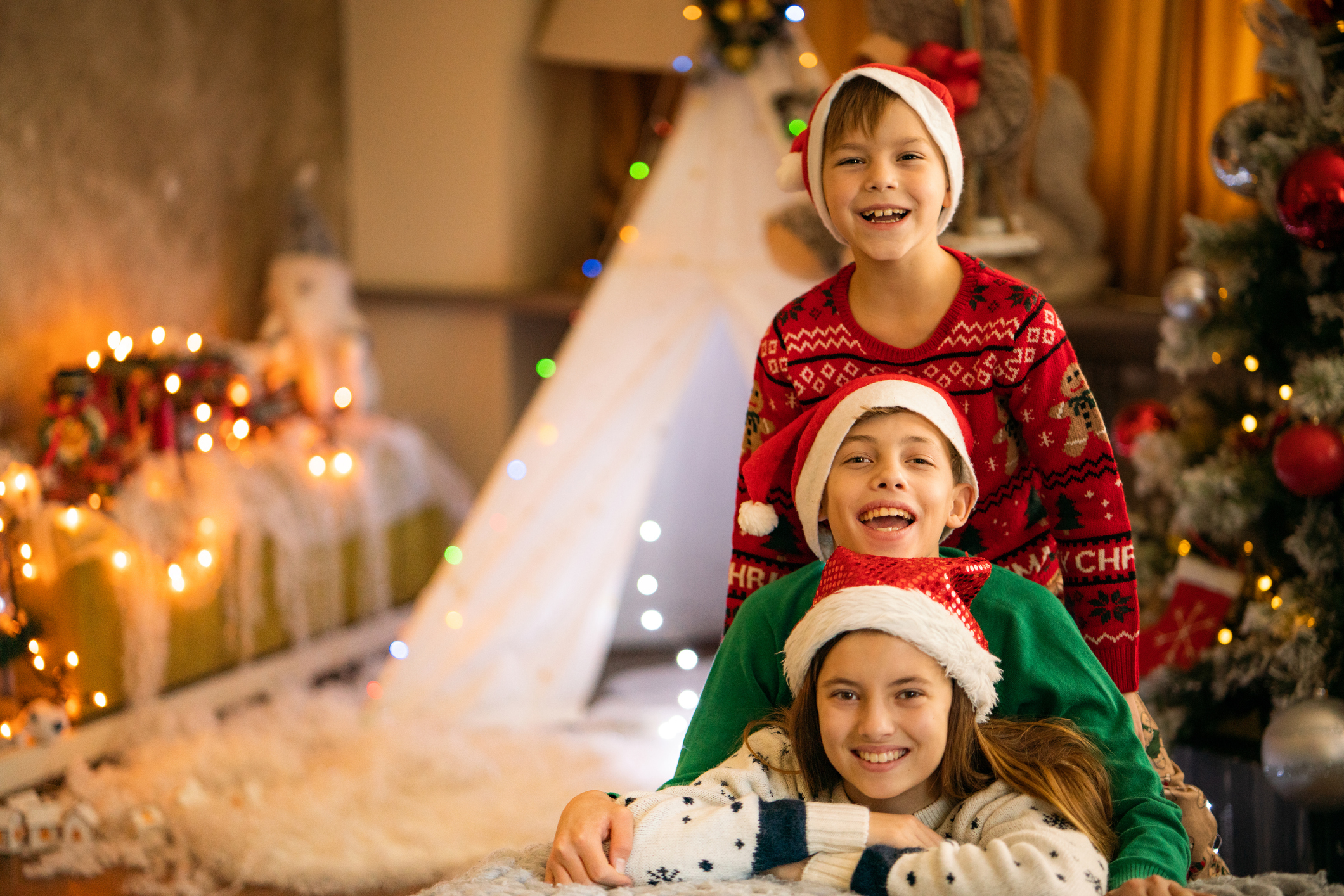How to Spot a Bubble in Stocks
These signs and signals can help investors spot a bubble in stocks.


Have you ever noticed that equity investors can't have nice things? As miserable as we are when stocks are going down, we're even more unhappy when they're going up.
There's an empirical explanation for this psychological phenomenon. It's called loss aversion. Humans are at the mercy of all sorts of cognitive biases, and one of the more perverse ones is that we experience far more pain from losing money than we experience pleasure from winning the exact same sum.
That's why when markets are rising, stocks are said to be climbing a wall of worry. The higher stocks climb, the more investor anxiety mounts. That's loss aversion at work.
From just $107.88 $24.99 for Kiplinger Personal Finance
Become a smarter, better informed investor. Subscribe from just $107.88 $24.99, plus get up to 4 Special Issues

Sign up for Kiplinger’s Free Newsletters
Profit and prosper with the best of expert advice on investing, taxes, retirement, personal finance and more - straight to your e-mail.
Profit and prosper with the best of expert advice - straight to your e-mail.
Cut to today, with markets at record highs and valuations stretched by just about any metric you care to use, and it's only natural for investors to question if stocks are in a bubble.
After all, stocks never go up in a straight line, but that's pretty much what the S&P 500 did after bottoming out in early April. The benchmark index is up more than 33% on a price basis ever since. Such a torrid run has U.S. equities trading at some of their very priciest levels in history, according to BofA Securities.
"On 19 of 20 metrics the S&P 500 is trading at statistically expensive levels," writes Savita Subramanian, head of U.S. equity strategy and U.S. quantitative strategy at BofA Global Research, in a note to clients. "Four of the 20 metrics – Market Cap to GDP, Price to Book, Price to Operating Cash Flow and Enterprise Value to Sales – just hit record highs."
Is the stock market in a bubble? Here's how to tell
Happily, valuation is not a timing tool, as strategists take pains to point out. Subramanian actually argues that the market isn't quite as richly valued as it appears at first blush.
For one thing, with the Federal Reserve cutting interest rates against a backdrop of broadening and accelerating profits, it's not hard to argue for a boom in earnings-per-share and GDP growth, the strategist adds.
It's also possible that stocks have structurally re-rated to carrying richer valuations.
"The S&P 500 has changed significantly from the 80s, 90s and 2000s," writes Subramanian. "Perhaps we should anchor to today's multiples as the new normal rather than expecting mean reversion to a bygone era."
Perhaps most importantly, bubbles are as much of a psychological phenomenon as a financial one.
There's no substitute for experience on Wall Street, which is why it's always wise to listen to old hands when it comes to divining the market's machinations. Nicholas Colas, co-founder with Jessica Rabe of DataTrek Research, started working full-time on Wall Street in 1986. He lived through the October 1987 stock market crash and has witnessed every boom and bust up close ever since.
Colas has developed a three-point checklist for "spotting unhealthy, runaway markets." Here's a thumbnail version:
The market for initial public offerings gets frothy. Although the number of IPO announcements hit a multiyear high in the third quarter, the market for new issues has been subdued since it peaked in 2021. Higher interest rates and the availability of private-market funding remain headwinds.
"The good news is that history shows a rampant IPO market is a clear sign of a top," Colas notes. "We're nowhere close to that now."
Hallmark mergers and acquisitions (M&A) deals. "Exceptionally bad deals happen at the top, even if at the time they seem quite sensible," Colas writes. "M&A activity is ultimately a function of CEO/board confidence. Just like retail investors chasing hot IPOs at a market peak, senior managers fall prey to the same overconfidence that the good times will last forever."
Happily, M&A activity, while picking up, also remains under control. M&A volumes globally declined 9% in the first half of 2025 compared with the prior-year period, according to PwC.
A double is a bubble. Colas has a simple rule of thumb to identify unsustainably high prices in a range of markets. Whenever the S&P 500 doubles in three years or less, stock prices decline shortly thereafter. The same is true about the Nasdaq Composite over any rolling one-year window going back to the early 1970s, notes Colas.
"A double is a sign of speculative excess because macro conditions are never so different that asset prices should rise 100% over a short period of time," Colas says. "Markets are reasonably good discounting mechanisms. When prices double, you know speculation – not fundamentals – are driving those gains."
Even the Nasdaq Composite, which is the frothiest equity market right now, is up "only" 25% over the past year.
Another tech bubble?
The remarkable bull market in equities was given fresh fuel by the Federal Reserve's jumbo interest rate cut a year ago, but bubble anxiety centers around the AI companies, such as the Magnificent 7, that dominate the S&P 500 and Nasdaq-100.
Naturally, echoes of the bursting of the dot-com bubble are top of anxious investors' minds.
"The introduction of transformative technologies typically attracts growing investor interest as well as significant capital and new competition," writes Peter Oppenheimer, chief global equity strategist and head of macro research Europe at Goldman Sachs. "As enthusiasm builds and stock prices increase, the sum of individual company valuations can overstate the total potential aggregate returns; often a bubble develops and bursts."
Oppenheimer notes the technology sector has generated 32% of the global equity return and 40% of the U.S. equity market return since 2010. But this reflects stronger fundamentals rather than irrational exuberance.
"In our view, the technology sector is not in a bubble and is likely to continue to dominate returns," the strategist adds. That said, "concentration risks are high and investors should look to diversify exposure to improve risk-adjusted returns while also gaining access to potential winners in smaller technology companies and other parts of the market."
Are stocks in a bubble?
None of Colas' time-proven indicators point to a stock market bubble, but a bubble very much remains a possibility next year, Colas says. Keep an eye on IPOs, M&A and how fast market levels rise from here.
Also remember that while the explosive growth in all things AI has valuations looking stretched, Goldman Sachs' Oppenheimer notes, "valuations often also understate the opportunities that can accrue in the non-technology industries that can leverage the technology to generate higher returns."
Related Content
Profit and prosper with the best of Kiplinger's advice on investing, taxes, retirement, personal finance and much more. Delivered daily. Enter your email in the box and click Sign Me Up.

Dan Burrows is Kiplinger's senior investing writer, having joined the publication full time in 2016.
A long-time financial journalist, Dan is a veteran of MarketWatch, CBS MoneyWatch, SmartMoney, InvestorPlace, DailyFinance and other tier 1 national publications. He has written for The Wall Street Journal, Bloomberg and Consumer Reports and his stories have appeared in the New York Daily News, the San Jose Mercury News and Investor's Business Daily, among many other outlets. As a senior writer at AOL's DailyFinance, Dan reported market news from the floor of the New York Stock Exchange.
Once upon a time – before his days as a financial reporter and assistant financial editor at legendary fashion trade paper Women's Wear Daily – Dan worked for Spy magazine, scribbled away at Time Inc. and contributed to Maxim magazine back when lad mags were a thing. He's also written for Esquire magazine's Dubious Achievements Awards.
In his current role at Kiplinger, Dan writes about markets and macroeconomics.
Dan holds a bachelor's degree from Oberlin College and a master's degree from Columbia University.
Disclosure: Dan does not trade individual stocks or securities. He is eternally long the U.S equity market, primarily through tax-advantaged accounts.
-
 I'm want to give my 3 grandkids $5K each for Christmas.
I'm want to give my 3 grandkids $5K each for Christmas.You're comfortably retired and want to give your grandkids a big Christmas check, but their parents are worried they might spend it all. We ask the pros for help.
-
 If You're Not Doing Roth Conversions, You Need to Read This
If You're Not Doing Roth Conversions, You Need to Read ThisRoth conversions and other Roth strategies can be complex, but don't dismiss these tax planning tools outright. They could really work for you and your heirs.
-
 Could Traditional Retirement Expectations Be Killing Us?
Could Traditional Retirement Expectations Be Killing Us?A retirement psychologist makes the case: A fulfilling retirement begins with a blueprint for living, rather than simply the accumulation of a large nest egg.
-
 I'm a Financial Planner: If You're Not Doing Roth Conversions, You Need to Read This
I'm a Financial Planner: If You're Not Doing Roth Conversions, You Need to Read ThisRoth conversions and other Roth strategies can be complex, but don't dismiss these tax planning tools outright. They could really work for you and your heirs.
-
 Could Traditional Retirement Expectations Be Killing Us? A Retirement Psychologist Makes the Case
Could Traditional Retirement Expectations Be Killing Us? A Retirement Psychologist Makes the CaseA retirement psychologist makes the case: A fulfilling retirement begins with a blueprint for living, rather than simply the accumulation of a large nest egg.
-
 I'm a Financial Adviser: This Is How You Can Adapt to Social Security Uncertainty
I'm a Financial Adviser: This Is How You Can Adapt to Social Security UncertaintyRather than letting the unknowns make you anxious, focus on building a flexible income strategy that can adapt to possible future Social Security changes.
-
 I'm a Financial Planner for Millionaires: Here's How to Give Your Kids Cash Gifts Without Triggering IRS Paperwork
I'm a Financial Planner for Millionaires: Here's How to Give Your Kids Cash Gifts Without Triggering IRS PaperworkMost people can gift large sums without paying tax or filing a return, especially by structuring gifts across two tax years or splitting gifts with a spouse.
-
 'Boomer Candy' Investments Might Seem Sweet, But They Can Have a Sour Aftertaste
'Boomer Candy' Investments Might Seem Sweet, But They Can Have a Sour AftertasteProducts such as index annuities, structured notes and buffered ETFs might seem appealing, but sometimes they can rob you of flexibility and trap your capital.
-
 AI Stocks Lead Nasdaq's 398-Point Nosedive: Stock Market Today
AI Stocks Lead Nasdaq's 398-Point Nosedive: Stock Market TodayThe major stock market indexes do not yet reflect the bullish tendencies of sector rotation and broadening participation.
-
 Got $100 to Gamble? These Penny Stocks Could Be Worth the Ride
Got $100 to Gamble? These Penny Stocks Could Be Worth the RideVolatile penny stocks are high-risk plays with potentially high rewards. If you have $100 you can afford to lose, these three names are worth a look.
-
 Quick Question: Are You Planning for a 20-Year Retirement or a 30-Year Retirement?
Quick Question: Are You Planning for a 20-Year Retirement or a 30-Year Retirement?You probably should be planning for a much longer retirement than you are. To avoid running out of retirement savings, you really need to make a plan.